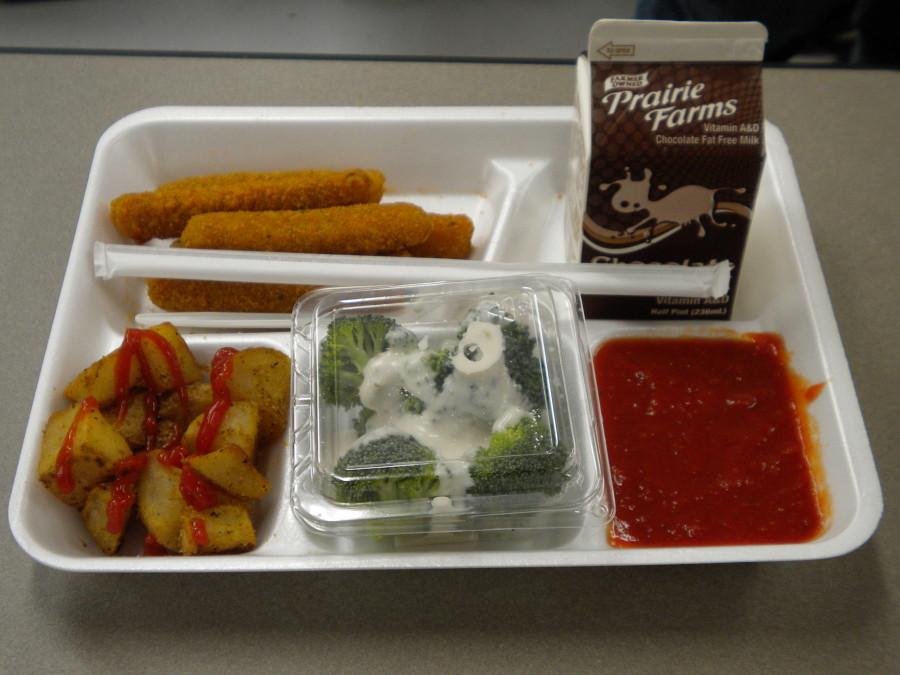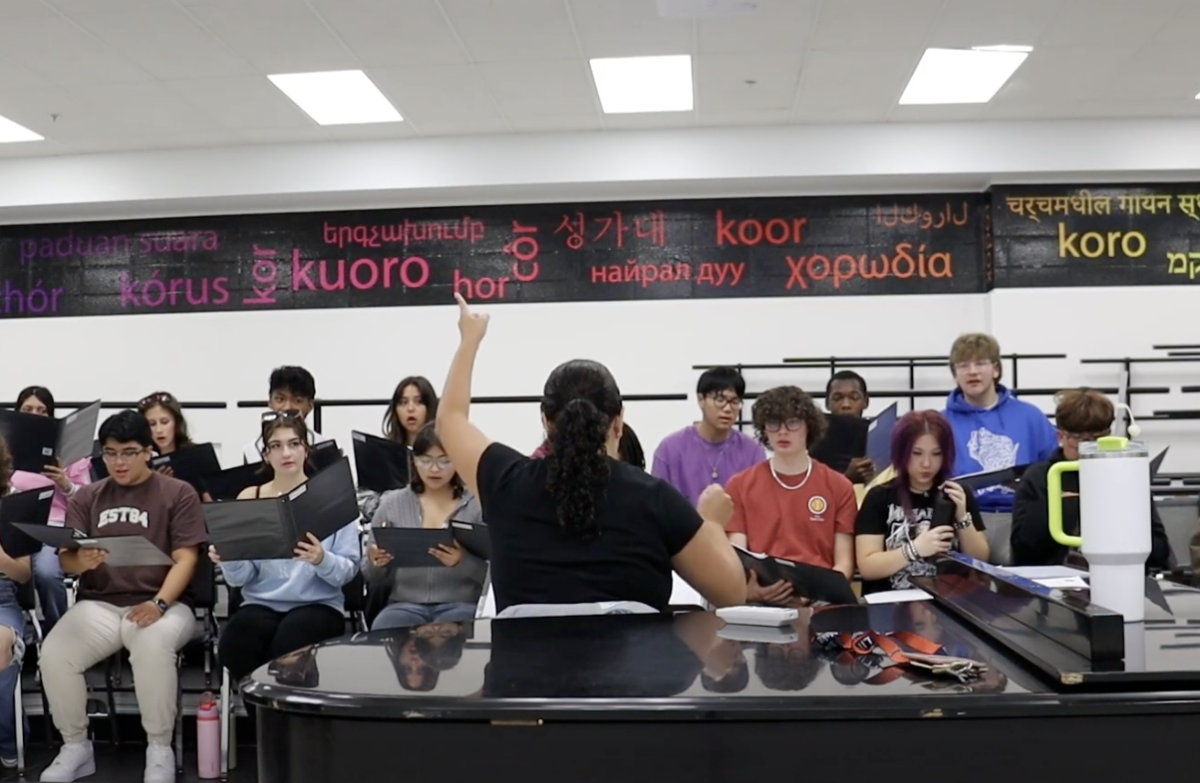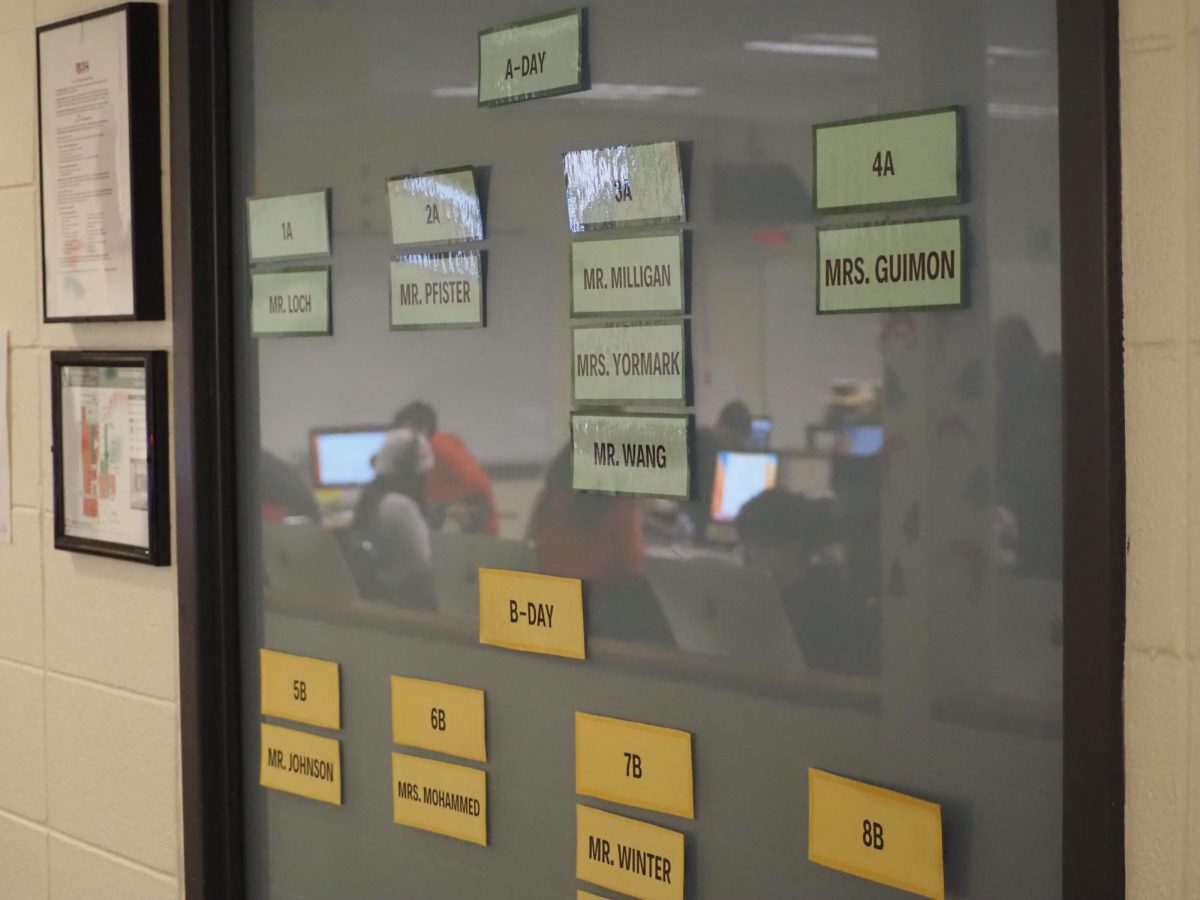By: Ellie Papadakis
As students wait in line to get their meal, many of them just know that they’re hungry. They don’t pause to think about the nutritional value of their chicken pattie or mashed potato bowl. This school year, District 214 is implementing the National Lunch Program and the USDA’s new nutrition standards.
“The students must take a minimum of a half cup of vegetables or fruit and a maximum of two cups,” Kathy Benn, food service manager, said.
These new regulations are to ensure that cafeteria meals will continue to be well-balanced. In the past, students getting a school lunch could choose if they wanted fruits and vegetables. Now students are required to take either both or one of these sides.
Benn says that the goal of this program is to help fight childhood obesity by implementing more fruit, vegetables and whole grain.
Over the years, the lunch staff has tried to make school lunch options healthier and less caloric in more ways than one.
For example, when planning meals, the lunch staff has reduced the amount of breads students eat during the week from 15 bread-based meals to 10. This includes Basco sticks and the bread found on popcorn chicken.
They have also swapped out the regular white bagels for healthier whole wheat bagels instead.
Senior Sara Schubring doesn’t think the new federal regulations will work, partly because of the condition of the vegetables and fruit that are served to students. She said that a lot of students complain that the food isn’t ripe and therefore don’t purchase the sides.
“Last Thursday, my sister was complaining that her cucumber slices were soggy and warm. Maybe if they got better conditions to keep the fruit in, it would seem more appealing,” she said.
Benn said that the fruits and vegetables are fresh and that they are prepared daily for the students. That said, if students do have a problem with their sides, they should not hesitate to talk to the lunch staff.
Senior Tulsi Patel buys lunch almost every day and agrees with Schubring.
“If they require us to take more than one side of fruit, and the fruit or vegetable is not even good, then there’s no point in us taking it because if it doesn’t look good we’re not going to eat it,” she said. “It’s just going to go to waste.”
The healthy side options are included in the $2.75 meal cost. If students refuse the sides, the food service staff would have to charge the students meal as an a la carte, which would be more expensive.
“Healthy choices are what we want to offer the students,” Benn said.










